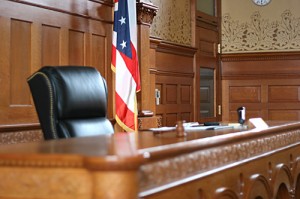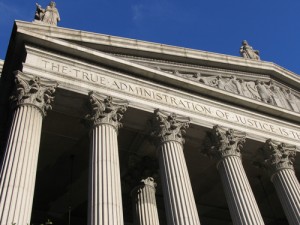Criminal Case Overview
The Criminal Trial Process
The exact progress of any particular case will differ depending on the practices in the jurisdiction and the complexity of the case. For example, misdemeanor cases tend to move quickly and with less formality. Felony cases move more slowly and deliberately. Federal cases tend to move quicker because caseloads in the Federal Court System are lower than most state court systems.
- 1. Complaint or Investigation
- 2. Arrest or Indictment
- 3. Pre-Trial Resolution
- 4. Bail / Preliminary Hearing
- 5. Judge Trial / Jury Trial
- 6. Verdict
- 7. Sentencing
- 8. Appeals
Investigation: All criminal cases begin with a complaint or an investigation. This usually involves someone bringing a crime to the attention of a police officer or other law-enforcement officials. The complainant is usually the victim or a witness. A police officer will be the complainant when the crime is committed in his presence. After a crime is reported, an investigation is done.
Depending on the offense and number of witnesses involved, an investigation might require several officers and forensic technicians. It might involve a large number of witnesses and physical evidence, or it may simply involve a patrol officer interviewing the alleged victim and any witnesses who are present when he arrived. Many undercover investigations span several years. They often include many hours of secretly recorded telephone conversations, undercover videotape of illegal transactions, and lots of documentary and physical evidence.
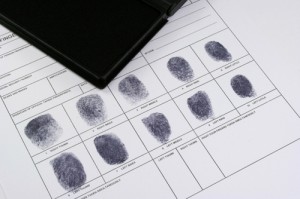
Arrest & Indictment: In order to make an arrest, the police need only have “probable cause,” or reasonable grounds, to believe a person has committed a crime. The police may temporarily detain a person when there is reasonable suspicion to believe the person has committed or is about to commit a crime. In most cases an arrest is made during the initial investigation. However, in complex “white collar crimes” such as money laundering, or bank fraud or in a case involving a drug trafficking conspiracy, an arrest may not be made until the investigation is complete. In such cases, a prosecutor will often present the matter to a grand jury and obtain an indictment against all the defendants before anyone is arrested.The indictment is a formal statement of the charges against a defendant. Indictments must be presented to grand juries that consider only the evidence provided by prosecutor. The grand jury then votes to indict or not. In most jurisdictions and in the federal system serious offenses require indictment by the grand jury. However, in some instances a prosecutor may simply file what is called a bill of information. This is not presented to the grand jury. The filing of an indictment or bill of information is merely the formal commencement of the prosecution.
 Dismissal: Even though a person has been arrested and formal charges initiated, the prosecuting attorney has discretion to either reduce or dismiss the charge. If there are multiple charges he can reduce or dismiss some or all of the charges. This often occurs in a plea bargain.
Dismissal: Even though a person has been arrested and formal charges initiated, the prosecuting attorney has discretion to either reduce or dismiss the charge. If there are multiple charges he can reduce or dismiss some or all of the charges. This often occurs in a plea bargain.
Diversion: Many jurisdictions have diversion programs, some formal and some informal. The programs are designed to divert first time offenders who show good potential for rehabilitation out of the criminal justice system. This frees up the system to deal with serious offenders and provides an opportunity for worthy individuals to redeem themselves from their mistakes. Common elements include a requirement that the defendant “stay out of trouble” for a specific period of time, attend substance abuse counseling and pay restitution. At the successful conclusion of a diversion program, the charges are usually dismissed. In Louisiana the District Attorney is permitted by law to run a formal diversion program. Both the Caddo and Bossier Parish District Attorney offices run excellent diversion programs.
Plea Negotiations: Most cases are resolved by “plea bargains” that involve the reduction or dismissal of some the charges against a defendant in exchange for a plea of guilty to fewer charges or to a lesser offense. Plea bargains allow cases to be resolved in a fair, just and expeditious manner. Many jurisdictions now require that the crime victim have input in the plea bargaining process. Often the negotiation will result in a plea to the original offense but with the jail sentence being suspended and the defendant placed on probation. If the defendant violates his probation, the jail sentence is imposed. “Dismissals and favorable plea bargains don’t just happen. In my experience, the favorable resolution of a serious case comes about only after a substantial amount of work and defense preparation.”
Bail & Detention: The Constitution requires that a person must be brought before a magistrate or judge within a reasonable time after being arrested for an initial determination of whether there is probable case to detain him. If there is no probable cause to believe the person committed a crime the person must be released. If so, the court must set bail if the defendant is otherwise eligible for bail.In most jurisdictions and in most cases, a person who is arrested is entitled to bail. Exceptions usually involve serious violent offenses or serious drug trafficking offenses.
Some states, like Louisiana provide a state constitutional right to bail with limited exceptions. Bail in federal cases is controlled by the Bail Reform Act, which provides for liberal bail in most cases. However the Bail Reform Act also provides the government a mechanism to detain individuals until trial when there is a likelihood they will continue to engage in criminal activity, present a threat to the safety of the community or if they are likely to flee if released. In the case of misdemeanors and minor offenses bail is often set at the time of arrest based on a predetermined schedule. With felonies and more serious offenses, a judge who is provided some basic information about the offense, usually in the form of an affidavit prepared by the arresting officer, will set bail.
Preliminary Hearing: In most cases, a person accused of a crime is entitled to a “preliminary hearing.” This is an “adversarial hearing” where a defendant is entitled to legal counsel. The prosecutor is required to present evidence and has the burden establishing “probable cause” or reasonable grounds to believe the defendant committed a crime. In some jurisdictions the court will dismiss the case if the prosecutor does not carry his burden. In Louisiana the court is not allowed to dismiss the charges. However, it can release the defendant from his obligation to post bail pending trial. In some jurisdictions, such a Louisiana, there is no absolute right to a preliminary hearing, and once an indictment is returned it may only be allowed for limited purposes such as preserving testimony. Having a client out on bond is an important factor in successfully defending a criminal accusation. If our client is unable to make bond we will often move for a bond hearing or preliminary examination in an effort to have the bond reduced to a level the client or his family can afford.
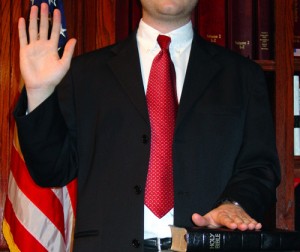
An Adversary Proceeding: Modern trials are adversary proceeding where two lawyers, acting as surrogates for their clients battle in a courtroom, as Clarence Darrow once said, ”Not for justice, but to win.” Each lawyer is an advocate for his client’s view of the case. The adversarial process dates back to the days of trial by combat when each “suitor” would choose a champion who would fight to the death for him.
Voir Dire & Jury Selection: The U.S. Constitution guarantees a trial by jury in felony cases. Many people think a defendant “chooses” his jurors. Nothing could be farther from correct. Jury selection is a process of weeding out people who cannot impartially decide the case. Both sides “strike” prospective jurors from a group of people who meet the basic legal requirements for jury service. The process begins with something called “voir dire.” Voir dire is French, meaning to speak the truth or to “speak truthfully.” Typically the judge and the lawyers question prospective jurors to determine whether they can be fair and impartial. In most jurisdictions the lawyers participate in varying degrees. The Louisiana State Constitution affords a criminal defendant the right to full and complete voir dire of the prospective jury. The lawyers are allowed to question prospective jurors in the presence of the court about a wide range of subjects. In the Federal system, the judge has complete discretion on whether to allow the lawyers to conduct voir dire and to what degree it will be permitted. Often the judge alone will voir dire the jury in federal court. Once voir dire is competed the lawyers are allowed to “strike” prospective jurors they are not comfortable with. These strikes are limited in number and are known as “preemptive challenges,” meaning that no explanation is required for asking that the prospective juror not be seated. Both sides are allowed an unlimited number of “challenges for cause.” However, the party challenging the juror must show the court why the jury is unfit to serve. During jury selection the prosecutor is looking for people who will be receptive to the evidence he will present. “As a defense lawyer I don’t look for stereotypes. I look for intelligent articulate people who want to be good jurors and who are open-minded and willing enough to listen to the all the evidence and examine all aspects of the defense before deciding the case.”
Opening Statements: The trial actually begins with opening statements. Both the prosecutor and defense counsel tell the jury what they think the evidence will show. The opening statement sets the stage for the presentation of the evidence. It is a critical part of the trial because evidence is not always presented in an apparently logical and easily understood fashion. “In opening statement I try to tell my client’s story while explaining why I expect the evidence will prove my client’s innocence. My goal is to provide the jury a framework into which they can place the testimony of each witness and “make sense” of the evidence and understand why my client is not guilty.”
Presentation of Evidence: The Prosecution’s case in chief The prosecutor has each witness testify by asking the witness questions which the witnesses then under oath. This is called direct examination. Defense counsel has the opportunity to ask the witness questions. This is called cross-examination. Cross-examination has been dubbed the greatest engine for reaching the truth that has ever been devised. During cross-examination a lawyer can use leading questions. He may elicit testimony from the witness that is favorable to the defendant and may inquire into areas of possible bias, prejudice or motivation to testify falsely. “The importance of cross-examination cannot be overlooked. Oftentimes the entire defense case is presented through the cross-examination of the prosecution witnesses. Cross-examination is one of the most important skills of a criminal defense lawyer.”
The Defendant’s case-in-chief: The decision to defend is a difficult one. A criminal defendant is not required to present a defense; however, after the prosecutor rests his case, the defense may present witnesses. The prosecutor is allowed to cross-examine any defense witnesses, including the defendant, if he or she testifies. The defendant may, but is not required, to testify. If the defendant does not testify nor present any evidence, the jury will be instructed that it cannot take this to mean the defendant is guilty. That is because the Constitution places the burden of proof on the prosecutor to prove the defendant is guilty beyond a reasonable doubt. The defendant does not have to prove he or she is innocent. “As I try to explain to juries, it is the case that is brought by the prosecutor that is not trial, not the defendant.” Prosecution Rebuttal Once the defense rests, the prosecution has the option to call witnesses to rebut the defense case.
Closing Arguments: After the evidence is closed, the prosecutor and the defense counsel will argue their respective cases to the jury. In closing, a lawyer is allowed wide latitude to argue the inferences and conclusions that can be drawn from the evidence. It is the defense lawyer’s opportunity to explain the significance of various pieces of evidence, show how the evidence relates to the law and passionately plead his client’s case. “In closing argument I try to bring my case full circle back to my opening statement and back to my client’s story. I try to show how the law and evidence bear out the client’s story and support a not guilty verdict.”
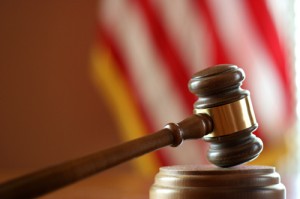
Jury Verdict: After the lawyers have argued their cases, the judge will instruct the jury on the law that applies to the case. The jury will retire, select a foreperson to deliberate. Jury deliberations are secret and juries must decide the case solely on the evidence presented in court. After the jurors deliberate they vote on whether or not they believe the prosecution proved its case beyond a reasonable doubt.In most jurisdictions and in the federal system a jury vote must be unanimous to reach a verdict. In limited circumstances, juries in Louisiana may convict on a less than unanimous vote. In such a case 10 out of 12 jurors must concur to reach a verdict. If the jury is deadlocked and cannot reach a verdict the judge will declare a mistrial and a new trial will be ordered. If the defendant is found not guilty he or she will be released. If the defendant is found guilty, the judge will set a date for sentencing and depending on the jurisdiction and the nature of the offense may or may not remand the defendant to jail pending sentencing.
Sentencing: In the federal system and in many state systems the judge will order a pre-sentence report, usually prepared by a probation or parole officer. In sentencing a defendant, the court can consider all kinds of information that may not have been relevant or admissible at trial.In the federal system the sentence is determined pursuant to the Federal Sentencing Guidelines. The Federal Sentencing Guidelines are very restrictive and leave little discretion to the judge. Some state courts use guideline systems also.
Other states like Louisiana leave sentencing largely up to the judge, who, absent any mandatory minimum sentence, has substantial discretion. In recent years both the state and federal systems have seen an explosion of these mandatory minimum sentences. While many outspoken judges oppose mandatory minimums, their hands are often tied. Usually a criminal sentence will involve a term of imprisonment (incarceration). The sentence may be suspended and the defendant placed on probation. Often the sentence will include restitution to the victim for damages caused by the defendant or a fine and court costs. If the defendant is placed on probation there is usually a probation supervision fee.
Incarceration: Incarceration requires a convicted person to be sentenced to a penal institution. Once incarcerated, he or she will remain in custody until they have served their time unless they are released on parole. Parole eligibility and practices vary widely among the states. Parole violations can result in the offender being re-incarcerated to serve the remainder of their sentence. Parole no longer exists in the federal system. When a prisoner completes his sentence in the federal system he or she must serve a period of supervised release during which he is supervised by a federal probation officer. Violations of the terms of supervised release can result in the person being re-incarcerated for the entire period of time they were to serve on supervised release. Probation & Suspended Sentences – In some cases the court will sentence the convicted person to incarceration but suspend the sentence for a period of time and place the person on probation. Once on probation the person will have a probation officer that monitors their activities and to whom they must regularly report. If the probation is successfully completed, then the person will not be incarcerated. However it the probationer violates any rule of probation the court may order the sentence be served. Other Sentencing Options – Depending on the jurisdiction and the particular offense a court may have sentencing options other than incarceration or probation. The court may order restitution, a fine, home incarceration, or intensive incarceration, sometimes referred to a “boot camp” for young offenders. The goal in sentencing is to limit the clients’ exposure to straight imprisonment or incarceration at hard labor while urging the court to adopt a sentencing options that work toward the rehabilitation of the client and encourage their return to productive citizenship.
Appeal: Once convicted, a defendant may appeal his or her conviction and/or sentence to a court of appeal. A court of appeals consists of a panel of judges who review the record and consider the arguments of lawyers for the prosecution and the defense. If it finds a serious error in the proceedings, it may order a new trial or new sentencing. In some extremely rare cases the court of appeals may set aside the jury verdict and enter a judgment of acquittal for the defendant.Most appeals involve criminal cases, and most are not successful. However this should not discourage a person with a meritorious issue from appealing a conviction or sentence. Judges and juries are composed of humans. Like all of us they can have bad days and make mistakes. Courts of appeal exist exclusively to review the decisions of trial judges and juries. A criminal case may ultimately be appealed directly to the United States Supreme Court. However, the U.S. Supreme Court is a court of limited jurisdiction and accepts only a very small percentage of cases submitted for review each year.
The Kind of Criminal Cases We AcceptHow We Defend a Criminal Case Criminal Law FAQ’s


